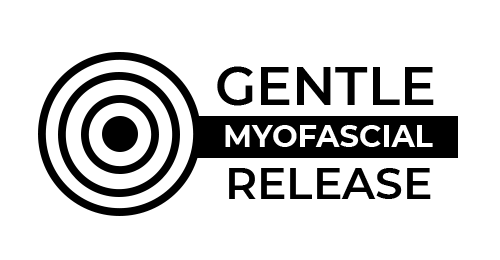I’ve spent over 20 years as a myofascial release therapist, and if there’s one thing I’ve learned, it’s that the body carries more than just physical tension. It holds onto emotional pain, past trauma, and stress in ways many of us may not realize. The phrase “the body keeps the score” resonates deeply with me because I’ve seen firsthand how trauma is stored and can live in the body—often causing chronic pain, tension, and health issues.
The more I’ve worked with clients, the more I’ve come to understand that trauma isn’t just something that happens in the mind. It’s something we physically store in our tissues, especially in the fascia—the connective tissue that encases and supports our muscles, nerves, and organs.
How Trauma is Stored in the Body
When we experience trauma, whether it’s from a physical injury, emotional distress, or a combination of both, our body instinctively responds by tensing up. This is part of the “fight or flight” response, where the muscles contract to protect us. In the moment, this response is incredibly helpful for survival. But when trauma isn’t processed or released, that tension can become chronic, leaving deep imprints in the body.
The fascia, in particular, plays a critical role here. It’s like a three-dimensional web of tissue that connects everything in our body. When we experience trauma, the fascia tightens and hardens, almost like a shield trying to protect us. Over time, this can lead to restricted movement, pain, and even deeper emotional distress. The body’s ability to move freely is compromised, and so is our ability to heal both physically and emotionally.
In many cases, people may not even realize that their physical pain is tied to unresolved emotional trauma. Neck and shoulder tightness, back pain, chronic headaches—these are just a few examples of how trauma manifests in the body. Even when the mind has pushed the trauma to the background, the body still holds on to it.
My Own Journey of Discovery
I’ve always been passionate about helping people feel better physically, but over time I started to see the connection between my clients’ physical pain and their emotional experiences. It became clear that traditional approaches to pain relief were only addressing part of the issue. When I began incorporating myofascial release techniques into my practice, I saw a transformation not only in how people moved but also in how they felt emotionally.
As I applied gentle, sustained pressure to release tension in the fascia, clients would often share unexpected emotional responses—tears, memories, or deep breaths of relief. It was as if their bodies were finally letting go of something they’d been holding onto for years. And it made perfect sense: as we released the physical tension in the fascia, we were also releasing the emotional weight trapped within it.
How Myofascial Release Can Help Stored Trauma
Myofascial release works by targeting areas of tension and tightness in the fascia, allowing it to become more flexible and fluid again. This gentle but effective therapy encourages the body to release old trauma, stored tension, and emotional blockages.
Here’s how it works:
- Gentle, Sustained Pressure: When I apply pressure to areas of tight fascia, the tissue begins to soften and loosen. This doesn’t happen immediately; it’s a slow and intentional process that allows the fascia to release at its own pace. I often tell clients that it’s like untying a knot—you can’t rush it, but when it loosens, the relief is profound.
- Emotional Release: As the fascia releases, emotions often come to the surface. Many people are surprised by this, but it’s a natural part of the process. Trauma is stored not just in our minds but in our bodies, and when we start to release the physical tension, the emotional weight lifts too.
- Improved Circulation and Healing: Releasing fascia tension improves blood flow and allows the body to heal more effectively. Pain is reduced, range of motion increases, and the body begins to feel lighter and more at ease.
- Long-Term Relief: Unlike quick fixes, myofascial release works on a deeper level to create lasting change. It addresses the root cause of physical and emotional pain, rather than just treating the symptoms.
My Experience with Clients
I’ve seen incredible transformations in clients who had been struggling with pain for years—sometimes even decades. One client, in particular, stands out. She came to me with chronic shoulder pain that no amount of physical therapy, massage, or painkillers could alleviate. As we worked through her myofascial restrictions, she began to open up about past trauma she had long buried. With each session, not only did her shoulder pain diminish, but she also began to feel lighter emotionally. It was as though her body had finally been given permission to release the pain she had carried for so long.
This story isn’t unique. Time and time again, I’ve seen how releasing fascia tension can lead to emotional healing. It’s a reminder that the body and mind are intimately connected—and that true healing addresses both.
Finding Freedom in Your Body
If you’ve been dealing with chronic pain or tension and haven’t been able to find relief, I encourage you to explore myofascial release. It’s not just about loosening tight muscles; it’s about freeing your body from the trauma and stress it has been carrying.
Our bodies are incredible, resilient, and wise. They hold onto things when they need to, but they also have an amazing capacity to let go when we create the right conditions. Through myofascial release, you can experience a new level of freedom—physically, emotionally, and mentally.
I believe deeply in the power of this work because I’ve seen its impact on myself and my clients. If you’re ready to release what your body has been holding onto, myofascial release may be the key to unlocking a healthier, more vibrant you.
Let’s start the journey together.



